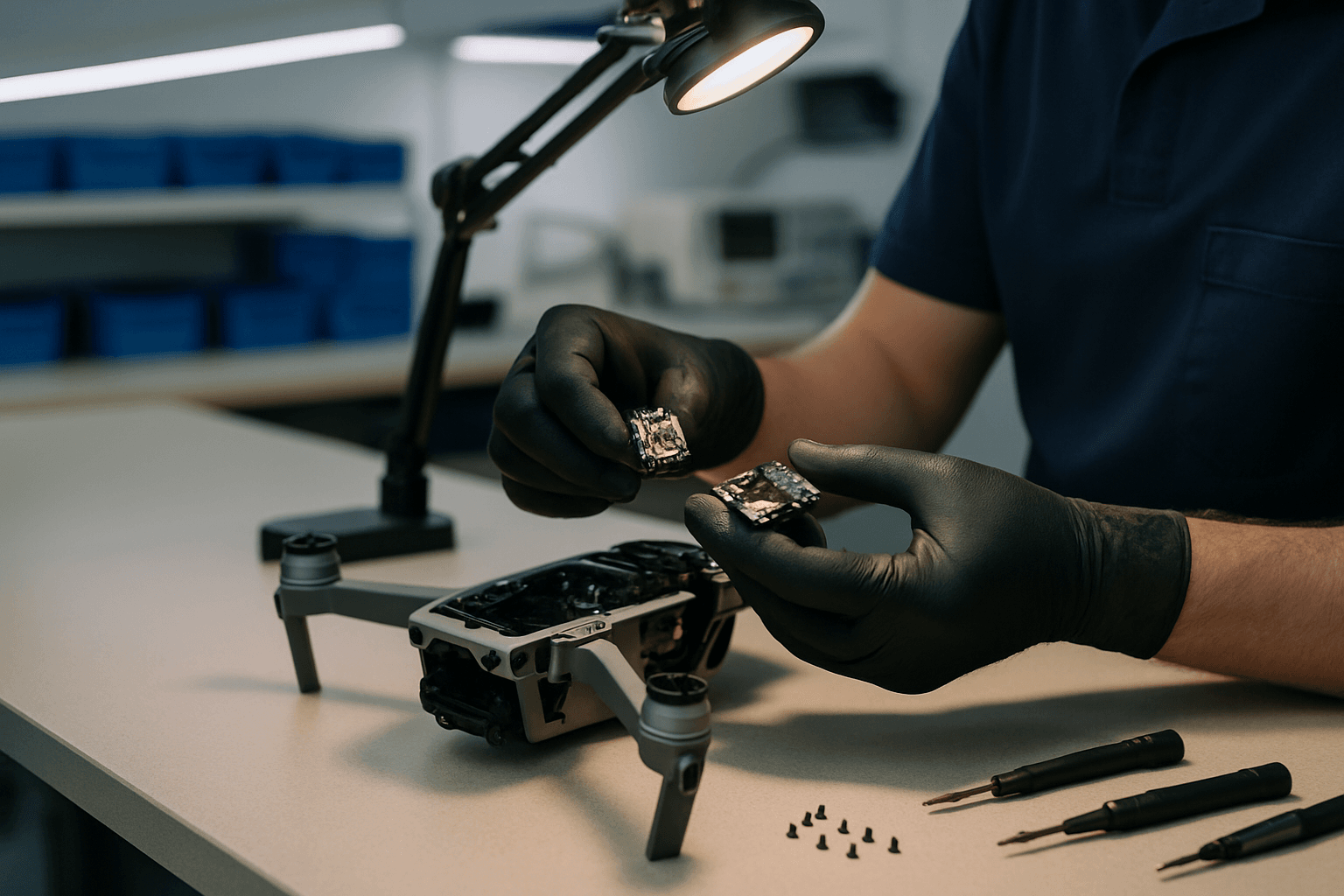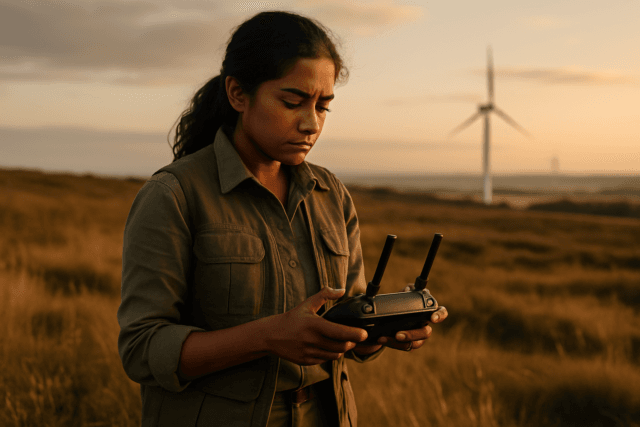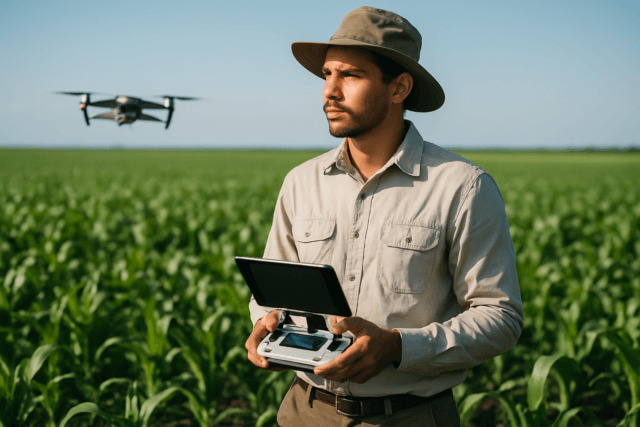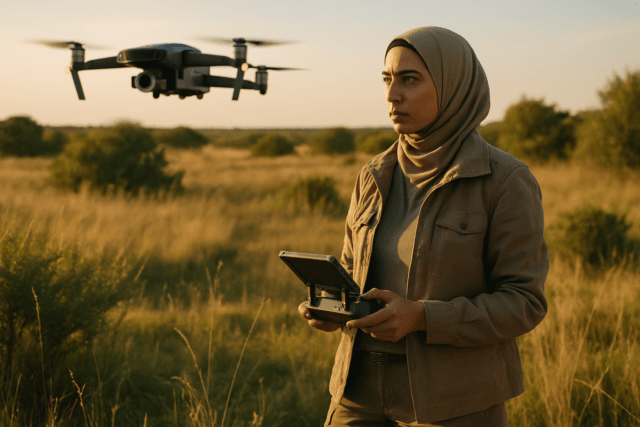Drones have become increasingly popular in the UK for both recreational and commercial use. However, like any technology, drones are susceptible to wear and tear, and accidents can happen. Knowing where to source reliable replacement parts is crucial for maintaining your drone and ensuring safe and enjoyable flights. This guide provides a detailed overview of drone replacement parts, maintenance tips, repair services, and relevant UK regulations.
Why Drone Replacement Parts Are Essential
- Extending Drone Lifespan: Replacing worn or damaged parts can significantly extend the life of your drone, saving you the cost of buying a new one.
- Ensuring Flight Safety: Damaged components can compromise flight stability and safety. Replacing them ensures your drone operates as intended, reducing the risk of accidents.
- Maintaining Optimal Performance: Over time, some parts may degrade, affecting performance. Replacing these parts can restore your drone’s original capabilities.
- Cost-Effectiveness: In many cases, repairing a drone with replacement parts is more cost-effective than replacing the entire unit.
Common Drone Problems and Their Solutions
Drones, like any technology, can encounter various issues. Here’s a look at some common problems and how to address them:
Battery Issues
- Problem: Insufficient charge, reduced flight time, battery not charging.
- Solutions:
- Ensure the battery is fully charged before each flight.
- Regularly inspect the battery for swelling, cracks, or corrosion.
- Store batteries at recommended temperatures (avoiding extreme heat or cold).
- Avoid deep discharges.
- Use the original charger or a smart charger.
- Consider replacing old batteries that no longer hold a charge.
- Maintenance: Charge and discharge the battery once a month, avoid storing with a full charge, and keep it at around 60% power when not in use.
Connectivity Problems
- Problem: Loss of signal between the remote controller and the drone.
- Solutions:
- Maintain a strong connection with the remote controller.
- Avoid interference from obstacles or other electronic devices.
- Check and update firmware on both the drone and the controller.
- Re-pair the controller with the drone.
- Ensure the controller’s battery is adequately charged.
Flight Instability
- Problem: Drone drifting, tilting during takeoff, or difficulty maintaining a stable hover.
- Solutions:
- Calibrate the drone’s compass and sensors regularly (about twice a year).
- Ensure propellers are clean, undamaged, and properly attached.
- Fly in calm weather conditions.
- Check the motor installation angle and ensure folding arms are fully extended.
Motor or Propeller Problems
- Problem: Strange noises, uneven lift, or failure to take off.
- Solutions:
- Clean the motors to remove dust and debris.
- Ensure propellers are not damaged, loose, or dirty.
- Tighten loose propellers.
- Check motor wires for damage and proper connection.
- Ensure the propeller order is correct (some spin clockwise, others counterclockwise).
- Inspect motors for stiffness or damage.
Camera and Gimbal Malfunctions
- Problem: Blurry or distorted footage, shaky video, or unresponsive camera.
- Solutions:
- Check camera settings and ensure they are properly configured.
- Inspect the camera and gimbal for physical damage or loose connections.
- Clean the camera lens.
- Update the drone’s firmware.
GPS Signal Loss
- Problem: Drone losing GPS signal and behaving erratically.
- Solutions:
- Fly in open areas with a clear view of the sky.
- Recalibrate the drone’s compass.
- Avoid flying near tall buildings or trees.
Essential Drone Replacement Parts
- Propellers: These are critical for lift and propulsion. Keep spares on hand as they can easily be damaged in crashes or by debris.
- Motors: Drone motors power the propellers and are essential for stable flight.
- Batteries: Having spare batteries extends flight times. Proper battery maintenance is crucial for safety and longevity.
- Landing Gear: Replace worn or damaged landing gear to ensure stability during takeoff and landing.
- Cables and Connectors: These ensure proper communication and power delivery between components.
- Camera and Gimbal Parts: For drones with cameras, spare parts include camera lenses, gimbal motors, and cables.
- Frame Components: Spare frame parts, such as arms and body shells, are handy for repairing structural damage.
- Propeller Guards: These protect propellers and prevent damage during collisions.
- GPS Module: A spare GPS module may be needed in case of failures for drones with GPS capabilities.
Where to Buy Drone Replacement Parts in the UK
Several online and physical stores in the UK offer a wide range of drone replacement parts. Here are some popular options:
- Drones Direct: Offers a wide range of drone parts and accessories, along with expert advice.
- Replace Base: A wholesale drone parts supplier in the UK offering competitive prices and quality parts.
- ALIGN-TREX.co.uk: Specializes in multirotor and drone spare parts from various brands.
- Flying Tech: Carries a wide range of FPV drone parts, including flight stacks, motors, and frames.
- RobotShop UK: Offers an extensive range of UAV and drone parts, including propellers, flight controllers, and batteries.
- Unmanned Tech Shop: Sells various drone parts and accessories for enthusiasts and professionals.
- Amazon.co.uk: A large online retailer with a wide selection of drone spare parts from various brands.
- Drone Authority: Specialists in FPV drones and RC hobby parts.
Drone Repair Services in the UK
If you’re not comfortable repairing your drone yourself, several reputable repair services in the UK can help:
- COPTRZ: A UK repair centre approved by DJI, Flyability, and Parrot, offering industry-leading drone repairs and servicing.
- Drone Doctor: DJI’s recommended service centre in the UK, offering fast repairs and a one-year guarantee.
- DroneDrop-Off: A UK drone repair service located in the Northwest of the UK, offering repairs for various DJI models.
- heliguy™: A DJI-authorised UK repair centre with DJI-trained technicians.
- Drone Works: Offers a fully authorised repair service for DJI drones with highly trained technicians.
- Direct Drone Repair: Specializes in DJI drone repairs and offers fixed-cost repairs for common issues.
Drone Maintenance Tips
Regular maintenance is essential for keeping your drone in top condition and preventing costly repairs. Here are some key maintenance tips:
- Pre-Flight Checks: Before each flight, inspect the propellers, camera gimbal, landing gear, and GPS connection. Use a pre-flight checklist to avoid missing crucial steps.
- Post-Flight Cleaning: After each flight, clean the propellers and motors to remove dust and debris. Use a soft, lint-free cloth and compressed air for cleaning.
- Battery Care: Avoid overcharging or completely depleting the battery. Store batteries at around 50-60% charge when not in use for extended periods.
- Firmware Updates: Regularly update your drone’s firmware to fix bugs and improve performance. Check your drone app for notifications and always update the flight controller, remote, and battery firmware.
- Proper Storage: Store drones in dry, dust-free areas. Use a padded case and avoid leaving the drone in extreme temperatures.
- Regular Inspections: Set a regular maintenance schedule for comprehensive inspections, focusing on critical components such as motors, propellers, and the frame.
UK Drone Regulations
It’s essential to be aware of and comply with UK drone regulations to fly your drone legally and safely. Here are some key points:
- Registration: All drones weighing 250 grams or more must be registered with the CAA (Civil Aviation Authority).
- Operator and Flyer IDs: An Operator ID is required for the person or organisation responsible for the drone, while a Flyer ID is needed for anyone flying the drone.
- Age Restrictions: The minimum age to register as a drone operator is 18, while the minimum age to obtain a Flyer ID is 13.
- Height and Distance Limits: Drones must not be flown above 400 feet (120 meters) and must remain within the operator’s visual line of sight.
- No-Fly Zones: Be aware of restricted airspace and no-fly zones, such as airports and congested areas.
- Flying Over People:
- A1 Category: Allows drones under 250g to fly over people but not crowds.
- A2 Category: Permits flying close to people, maintaining a safe distance (requires A2 Certificate of Competency).
- A3 Category: Requires flying far from people and properties not under the operator’s control.
- Transitional Period: Until January 1, 2026, drones without a class marking can continue to be flown under more relaxed rules.
Finding Repair Services
Several services can help you find drone repairs:
- Online Search: Conduct a search online using search engines like Google, to find drone repair services near your location.
- Drone Manufacturers: Contact the manufacturer of your drone to inquire about authorized repair centers in your area.
- Drone Communities and Forums: Engage with drone communities and forums online to seek recommendations and insights from fellow drone enthusiasts.
Cost Considerations for Drone Repairs
The cost of repairing a drone can vary significantly based on several factors:
- Type of Damage: Minor repairs, such as replacing propellers, are generally inexpensive. More extensive damage, such as gimbal repair or internal component replacement, can be considerably more costly.
- Drone Model: High-end drones or those with specialized components may have higher repair costs due to the complexity and availability of parts.
- Labor Costs: Repair services typically charge an hourly rate for labor. Complex repairs that require more time will result in higher labor costs.
- Parts Costs: The cost of replacement parts can vary widely depending on the brand, model, and source. Genuine parts from the manufacturer are usually more expensive than aftermarket alternatives.
- Inspection Fee: Some repair services charge an inspection fee to assess the damage and provide a repair quote. This fee may be waived if you proceed with the repair.
Typical costs associated with drone repair services:
- Inspection Fee: £35-£65 (Deductible from final repair cost if approved).
- Hourly Labor Charge: £55 per hour.
- Return Postage: Approximately £10-£15 (Free for repairs over £100 at some services).
- Fast-Track Service: Additional £75 for 72-hour completion (if available).
Conclusion
Maintaining your drone with regular maintenance and timely replacement of worn or damaged parts is crucial for ensuring flight safety, optimal performance, and extending its lifespan. By understanding common drone problems, knowing where to source reliable replacement parts, and being aware of UK drone regulations, you can enjoy safe and fulfilling flights.





